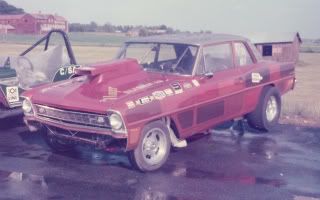

Dedicated to the Promotion and Preservation of American Muscle Cars, Dealer built Supercars and COPO cars. |
|
|||||||
| Register | Album Gallery | Thread Gallery | FAQ | Community | Calendar | Become a Paid Member | Today's Posts | Search |

|
|
|
Thread Tools | Display Modes |
|
|
|
#1
|
|||
|
|||
|
This brings up a good point.
How did the '65 396 go from 375hp to 425hp ( Vette only )? It could not have been just the Vette header-like exhaust manifolds. Was it a combo of exhaust & ignition? I'm positive the '65 396-425hp & the '66 396-375hp as well as the '66 427-425hp all used the 3863143 camshaft. So, where did those extra 50 hp come from   I remember a Vette owner telling me that some of the SHP full sized cars came with Corvette exhaust manifolds on them. Funny, I can't ever recall seeing one of them like that back in the day. With GM's interest in making the Camaro the "brute of the street", you'd think they would have come up with a better exhaust manifold setup for the F-bodies.  Anyone got any ideas? Steve
__________________

|
|
#2
|
|||
|
|||
|
I have an article somewhere in which Joel Rosen says that the 375 hp L-78 engines are identical to the 425 hp Corvette 396 engines made in 1965. Not counting the exhaustmanifolds.
__________________
Anders Stålklint. After selling my COPO 9561 I´m now a "postman" with the main project being a 1966 327 2 dr sedan Chevy II. 
|
|
#3
|
||||
|
||||
|
I believe they differ only in camshafts and lifters between the 425 and 375's? .
Sad about the car in your story Mac...a coupe as an '65-L78 or '66-L72 has been my #2 favourite car for years...2'nd only to a Canadian '61 409 Strato-Chief utility post! .  ~ Pete |
|
#4
|
|||
|
|||
|
Pete,
My research shows that they used the same camshaft between the two years I mentioned above. Anders, I expect that the exhaust has maybe 20-25hp gain. Does the TI ignition add the remainder of the hp gain? Steve
__________________

|
|
#5
|
|||
|
|||
|
Here is what I got one time when I asked this question.
Insurance concerns plus General Motors Corporate policies resulted in the use of a lower RPM rating resulting in decrease from 425 HP to 375 HP as a running change for all models except corvette. The L-78 was released for sale in the 1966 SS-396 Chevelle in March 1966 with a rating of 375 HP due to this lower RPM rating and somewhat more restrictive exhaust manifolds, it was otherwise identical to the 425 HP '65 Corvette.( same cam) The 1965 Z-16 396 Chevelle had the same engine except the Z-16 used a hydraulic camshaft which effectively limited RPM to the lower 375 HP rating.(L-37) Also all of my 66 Impala/ Biscayne l-72 427's came with the 3880827 and 828 vet exhaust manifolds originally. |
|
#6
|
|||
|
|||
|
My '66 Impala SS L72 also came with the Corvette cast iron exhaust manifolds.
__________________
PaulD '64 R-Code Mercury '62 421 SD Catalina '66 L72 Impala SS '66 R-Code Fairlane |
|
#7
|
||||
|
||||
|
Wasn't the L72 rated at 450hp initially and then lowered to 425hp....??? Read an interesting article the other day about a dyno test on the original 65 L78 and then revised results following a blueprint by Bill Thomas...these motors seemed to need a little help to achieve the factory ratings...
Neat stuff..wilma 
__________________
02 Berger 380hp #95 Lots of L78 Novas Join National Nostalgic Nova! 70 Orange Cooler 69 Camaro |
|
#8
|
|||
|
|||
|
I have never Dynoed the different exhaust manifolds side by side but it would be no where near a 50 hp difference.
The top dog prior to the mystery motor was the 409/425. GM could not go backwards in the public eye/marketing, at least at the initial release of their new solid lifter engine. Some early '66 L78 Chevelles have been documented as showing the L78 option rated at 425hp. I believe Bill Thomas' Blue printing guide/book has a dyno chart or info showing that the L78 could produce 425hp if brought to exact specs. The First 427/L72s were factory rated at 450hp. |
 |
|
|